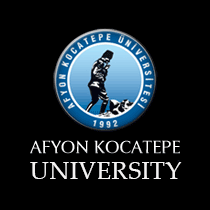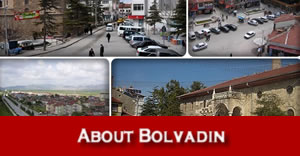Historical Information
Bolvadin is one of the oldest settlements of Anatolia. According to current records it has a 10.000 years past. The area –antique Paroreos Phrygia– containing Bolvadin has a history that goes back to 8000BC in terms of residential ruins. During the Archaic period Bolvadin was one of the 52 settlements in Afyon district. It is seen the traces of all historical periods of Anatolia in Bolvadin. At the time of Romans, it was called as Polybotum. Ancient Greek historian Ksnefon, in his book called Anabasis, notices Kayster Pedion –an area very close to Polybotum– as a crowded city where unites the ways.

In AD133 year the king of Romans, Hadrianus, visited Polybotum and introduced three different coins in his own name. At that time, the city was effecting culturally and socially to the nearby districts. Towards end of the Roman Empire, the city started to disperse because of the attacks of Turk and Arab tribes. At the beginning of 10th century a big earthquake occured in the city. The city was destroyed and the king Aleksi Comnenus of Romans built a castle to evacuate the residents but most of the people moved other cities.
At the time of Emevis, the commander Mesleme surrounded the city with a big army and some important people for the Islam history died in this war.
After the Battle of Malazgirt, Emir Menkülek seized control of Bolvadin in 1107 through Bolvadin War by giving control of the city to the Turks. After the Turkish control of the city, the tribes of Yazır, Avşar, Karkın and Çepni came and settled to this area. The origins of current inhabitants of Bolvadin date back to these tribes. During the following years some other tribes had come and settled to nearby area; Sarıkeçili, Karakeçili (Yörükkaracaören), Honamlı, Tekeli and Seljukian (Dişli) yoruk tribes; Morcaali (Kemerkaya), Karainbeyli (Çay), Karabağ (Büyükkarabağ, Ortakarabağ, Derekarabağ), Tabanlı (Kurucaova) turkmen tribes;
At the time of Seljuq Empire, Bolvadin was one of the ten sanjaks of Afyon. During this period there were eleven townships of Bolvadin; Han, Bayat, Musluca, Göçmen Akviranı, Nevahi-i Barkınlı, İshaklu, Çay, Karamık, Şuhut, Karaadilli, Çölabat, and 326 villages. At that time, Bolvadin was an important trade center. Alaca Mosque is one of the historical buildings that reaches today from the Seljuq Empire. The son of Rumi, Sultan Veled, visited Bolvadin and founded Bolvadin Mevlevi lodge. After the fall of Seljuq Empire, Bolvadin was controlled by Eşrefoğulları, Sahipataoğulları and Karamanoğulları Beyliks at different times.

Ottoman Empire took over Bolvadin at the time of Sultan Murat I. At that time, Bolvadin was a town of Germiyan Province (Kütahya) and Hüdavendigar Province (Bursa) respectively. Later the sanjak of Karahisar-ı Sahip (Afyon) was seperated into two parts according to taxation;
- Karahisar-ı Sahip Muhassılığı:Afyon (city centre), Sandıklı, Çal, Çivril, Sincanlı towns.
- Bolvadin Muhassılığı:Bolvadin (city centre), Han, Bayat, Musluca (Emirdağ), Nevahid-i Barçınlı (Kemerkaya), İshaklı, Karamık, Çay, Şuhut, Karaadilli, Çölabat towns.
Bolvadin was also a strategic center during the Turkish Independence War. First and second armies of Turkish Army were deployed in Bolvadin.
At the time of Ottoman Empire Bolvadin was an important trade and art center. According to statistics of 1831 census, there were 150 different types of jobs in Bolvadin. After the opening of state banks Ziraat and Ottoman, one of the first private banks of Ottoman period Bolvadin İktisadi Osmani Bank was founded in 1914.
In terms of cultural life; Ahi communities, madrasahs, dervish lodges were seen in Bolvadin at the time of Seljuk and Ottoman Empires. It was the centre of many cults like Nakşibendi, Kadri, Rufai and Şazeli. During the time of constitutional monarchy period of Ottomans –after 1839–, there were 7 primary schools (ibtidaiye), 1 secondary school (rüştiye) and 63 ottoman elementary-primary school (sıbyan) in Bolvadin.
Source: Bolvadin Municipality





